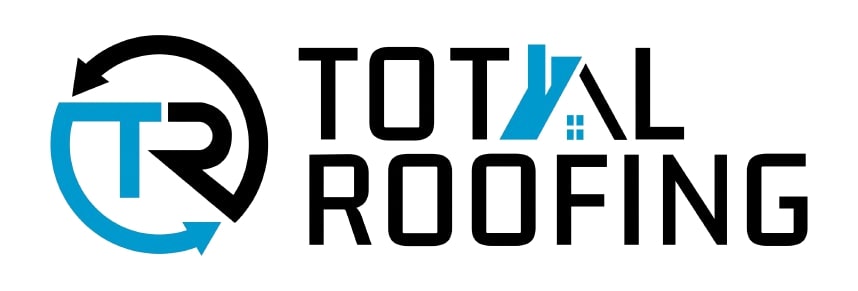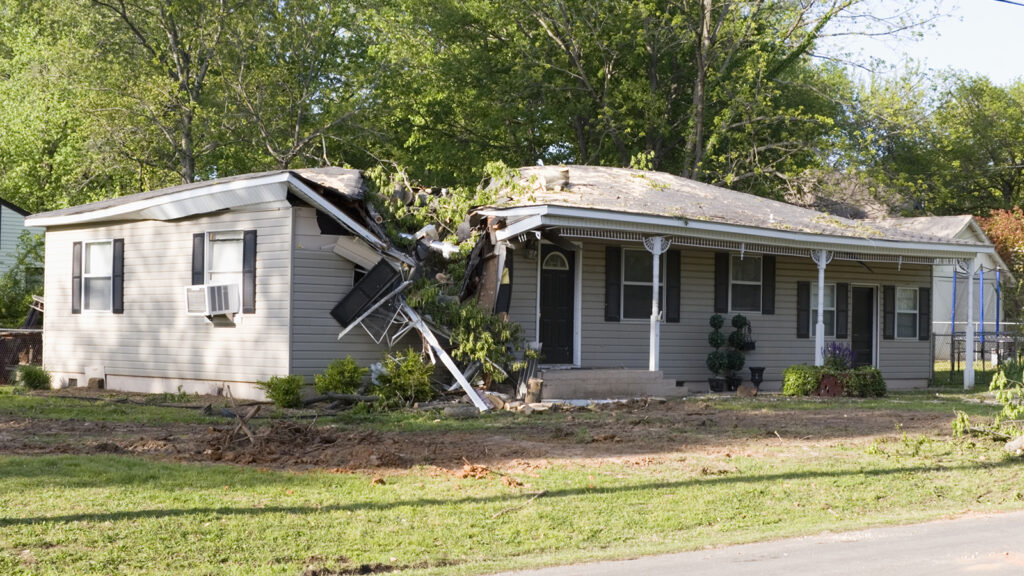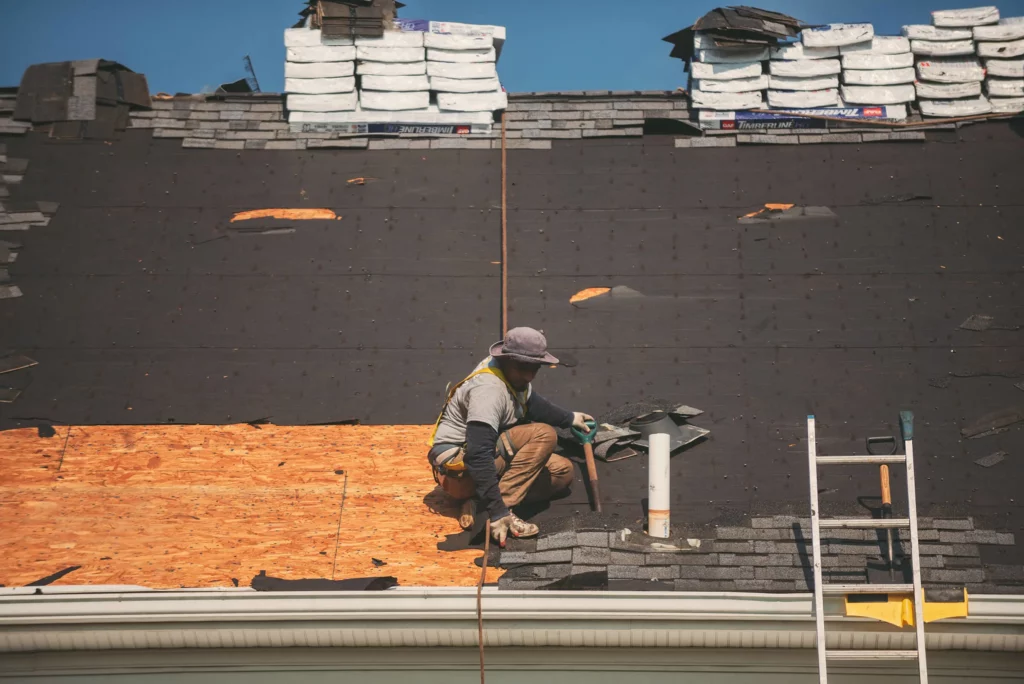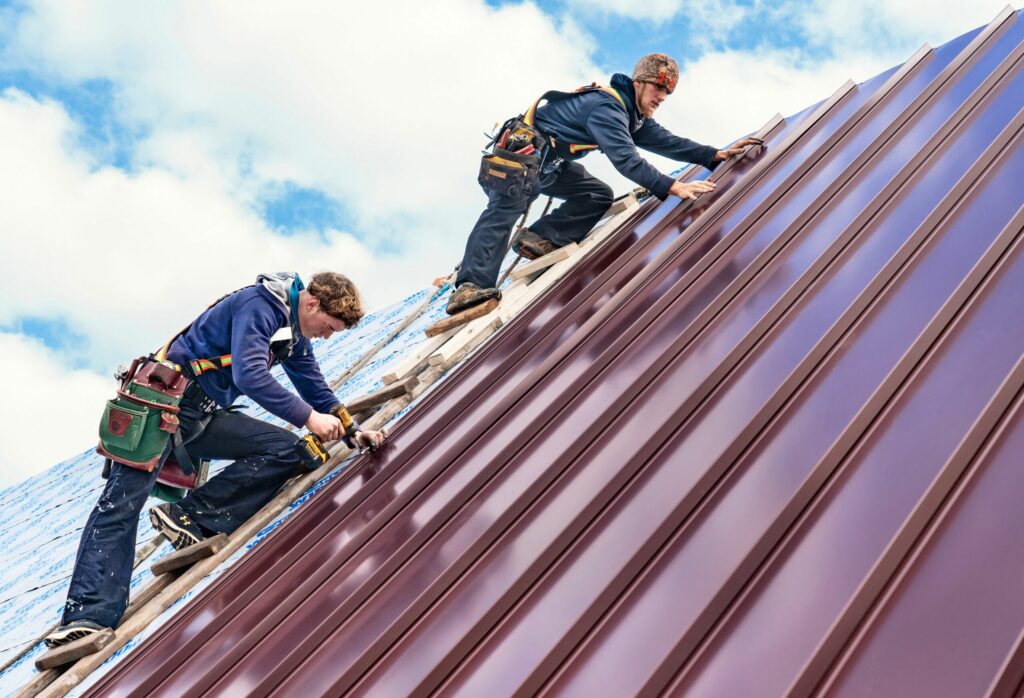Severe storms can wreak havoc on your home in a matter of minutes, with your roof taking the brunt of the impact. High winds, hail, heavy rain, and flying debris can all weaken your roofing system—sometimes in ways that aren’t immediately visible. What many homeowners fail to realize is that waiting too long to address storm damage can turn minor issues into major, costly repairs.
In this blog, we’ll break down why prompt action after a storm is critical, what risks you face by delaying, and how you can save thousands by being proactive.
1. Minor Storm Damage Escalates Quickly
It’s easy to assume that if your roof looks fine from the ground after a storm, there’s no damage. However, some of the most dangerous problems—like small leaks, lifted shingles, or damaged flashing—are hidden. Left unchecked, these minor issues can quickly snowball into severe structural problems.
For example, a single lifted shingle might not seem like an emergency. But under that shingle, water can begin to seep in during the next rainstorm. Over time, moisture penetrates the roof decking, causing rot, mold, and weakening the structure.
How It Costs You More:
- What could have been a $500 shingle repair can turn into a $10,000 roof replacement.
- Mold remediation or structural repairs can add thousands to the total cost.
Pro Tip: Schedule a professional roof inspection after any major storm, even if you don’t see obvious damage.
2. Water Damage is Silent But Destructive
Water is the silent enemy of any home. Storm damage often opens pathways for water to seep into the attic, walls, and ceilings. Because water travels along the path of least resistance, leaks may not become apparent until significant damage has already occurred.
Common signs of water damage include:
- Water stains on ceilings or walls
- Peeling paint or wallpaper
- Musty odors
- Sagging ceilings
- Warped wood or flooring
Beyond cosmetic issues, trapped moisture leads to:
- Mold growth, which poses health risks
- Electrical hazards from water near wiring
- Structural weakening of wood beams and framing
The longer water damage festers, the more expensive the restoration process becomes.
Pro Tip: Address even the smallest leak immediately. Water damage repair costs grow exponentially the longer you wait.
3. Storm Damage Can Void Your Roof Warranty and Insurance Claim
Most roofing materials come with warranties, but those warranties often have conditions requiring homeowners to address damage promptly. Ignoring storm damage can void your manufacturer’s warranty, leaving you to pay the full replacement cost.
Additionally, insurance companies have deadlines for filing storm damage claims. Waiting too long could lead to:
- Denied claims
- Out-of-pocket expenses
- Disputes with your insurer
Acting fast ensures you meet deadlines, provides evidence of damage, and maximizes your chances of a fair payout.
Pro Tip: Document the damage with photos and videos right after the storm. Call your insurance and a qualified roofer to assist with the claim process.
4. Temporary Repairs Are Not a Long-Term Solution
It’s common for homeowners to patch up damage temporarily—laying a tarp over a leak or replacing a few shingles themselves. While this can work as an immediate fix, it’s not a long-term solution.
Temporary repairs often fail to address hidden structural issues, water intrusion points, or compromised flashing. The real danger is that they create a false sense of security, causing you to delay necessary professional repairs or replacement.
Over time, that delay allows damage to worsen unseen, leading to higher repair costs when you finally address the problem.
Pro Tip: Use temporary repairs only as a stopgap while you schedule a professional assessment.
5. Structural Damage Can Compromise the Entire Home
Storms don’t just damage shingles—they can weaken the entire roofing system. Strong winds can:
- Uplift the roof deck
- Shift or crack support beams
- Loosen fasteners and connectors
Hailstones can:
- Bruise shingles
- Crack vents and flashing
- Dent gutters and downspouts
If structural damage is ignored, it compromises your roof’s integrity and your home’s safety. In the worst cases, this leads to roof collapse, especially under heavy snow or rain in the future.
The Cost of Structural Neglect:
- Full roof replacement: $12,000 – $30,000+
- Structural repairs: $5,000 – $15,000
- Interior repairs due to collapse: Unlimited potential cost
Pro Tip: If you hear creaking or see sagging in your roofline after a storm, get an inspection immediately. It’s not worth the risk.
6. Increased Energy Bills from Hidden Damage
When storms damage your roof, it impacts more than just structural integrity. Gaps, leaks, or insulation damage caused by storms can cause significant energy loss. As heated or cooled air escapes through the compromised areas, your HVAC system works overtime, leading to skyrocketing energy bills.
In some cases, homeowners don’t realize the connection between their increased utility costs and roof damage until months later—by then, the hidden damage is worse and more expensive to fix.
Signs Storm Damage is Increasing Your Bills:
- Higher energy usage without changing thermostat settings
- Uneven temperatures in rooms
- Drafts or hot spots in the attic
Pro Tip: If your energy bills spike after a storm, it’s time to check your roof.
7. Delaying Repairs Decreases Your Home’s Resale Value
Your roof is a key component of your home’s curb appeal and resale value. Potential buyers or home inspectors will spot signs of past storm damage, leaks, or improper repairs.
A compromised roof can:
- Lower your home’s market value
- Scare off potential buyers
- Force you to reduce your asking price or pay for a new roof during negotiations
Example:
A $15,000 investment in a roof replacement after storm damage might increase your home’s value by $20,000. However, if you neglect the repair, buyers may demand a much higher price cut—or walk away entirely.
Pro Tip: Protect your investment by addressing storm damage immediately and keeping detailed records of repairs for future resale.
The Cost Breakdown: Immediate Action vs. Delayed Repairs
| Issue | Immediate Repair Cost | Delayed Repair Cost |
|---|---|---|
| Shingle Replacement | $500 – $1,500 | Full Roof Replacement: $15,000+ |
| Leak Repair | $300 – $1,200 | Water Damage/Mold: $10,000+ |
| Gutter Repair | $350 – $800 | Foundation Damage: $20,000+ |
| Insulation Replacement | $1,000 – $2,500 | Skyrocketing Energy Bills |
| Insurance Claim Filing | Mostly covered | Denied Claim: Out-of-pocket |
Moral of the story: The longer you wait, the more it costs.
What You Should Do Immediately After a Storm
- Inspect the Damage Safely: Look for missing shingles, dents, sagging, or debris but avoid climbing the roof yourself.
- Document Everything: Take photos and videos from various angles.
- Call Your Insurance Company: File a claim as soon as possible if needed.
- Schedule a Professional Roof Inspection: Don’t rely on guesswork—get a roofing expert to evaluate the damage.
- Get Repairs or Replacement Done Quickly: Don’t wait for the next storm to worsen the situation.
Final Thoughts: Acting Fast Saves Money and Protects Your Home
Storm damage is inevitable, but what you do next determines how costly it becomes. Delaying roof repairs or replacement can lead to exponentially higher expenses—from mold removal and structural repair to full roof replacement.
By acting fast, you:
- Prevent hidden damage from escalating
- Protect your home’s structure and value
- Ensure your insurance covers the costs
- Maintain your roof’s warranty
- Save thousands in potential repair bills
Schedule a professional inspection today if you’ve recently experienced a severe storm. Investing a little time now could save you from a financial disaster later.



